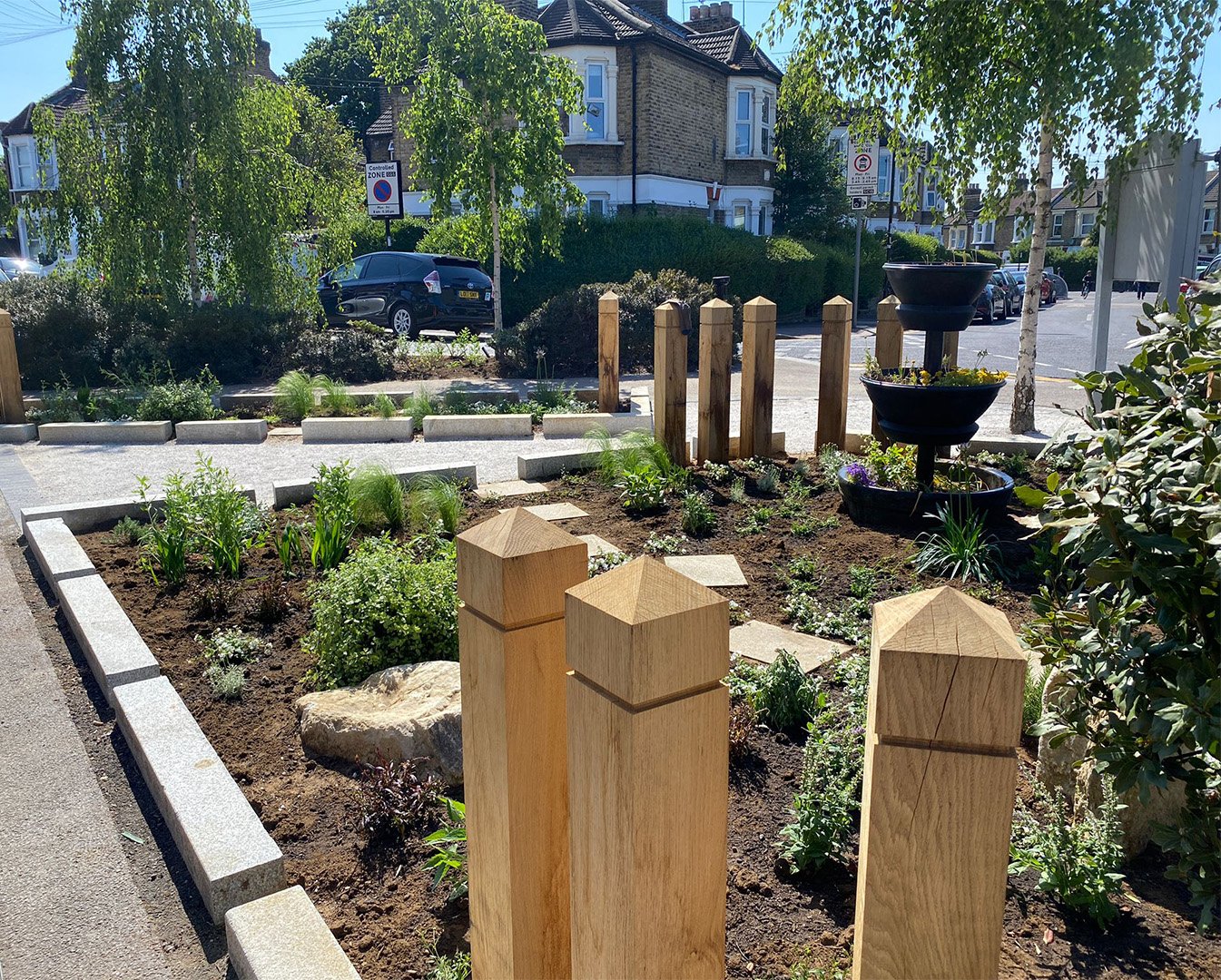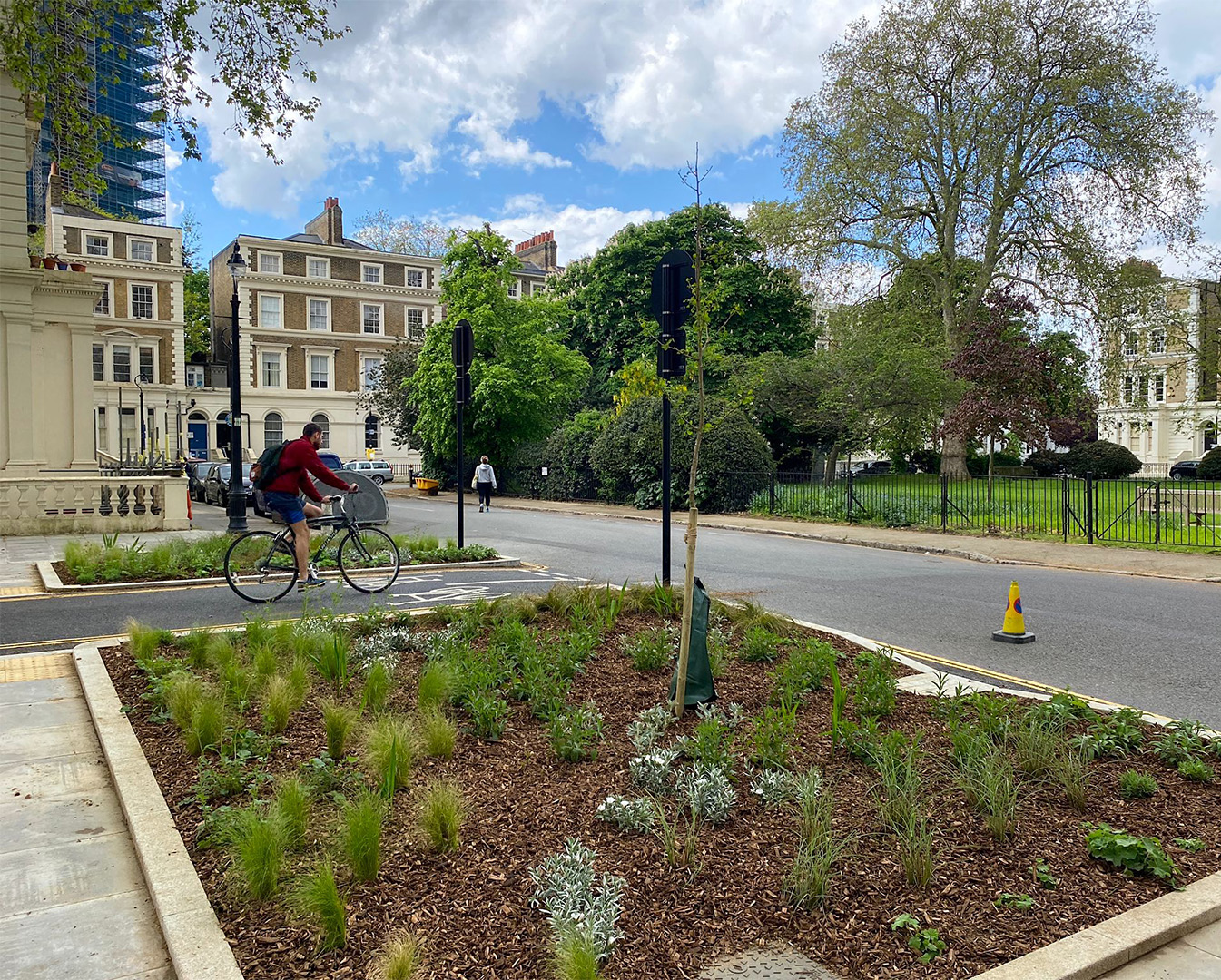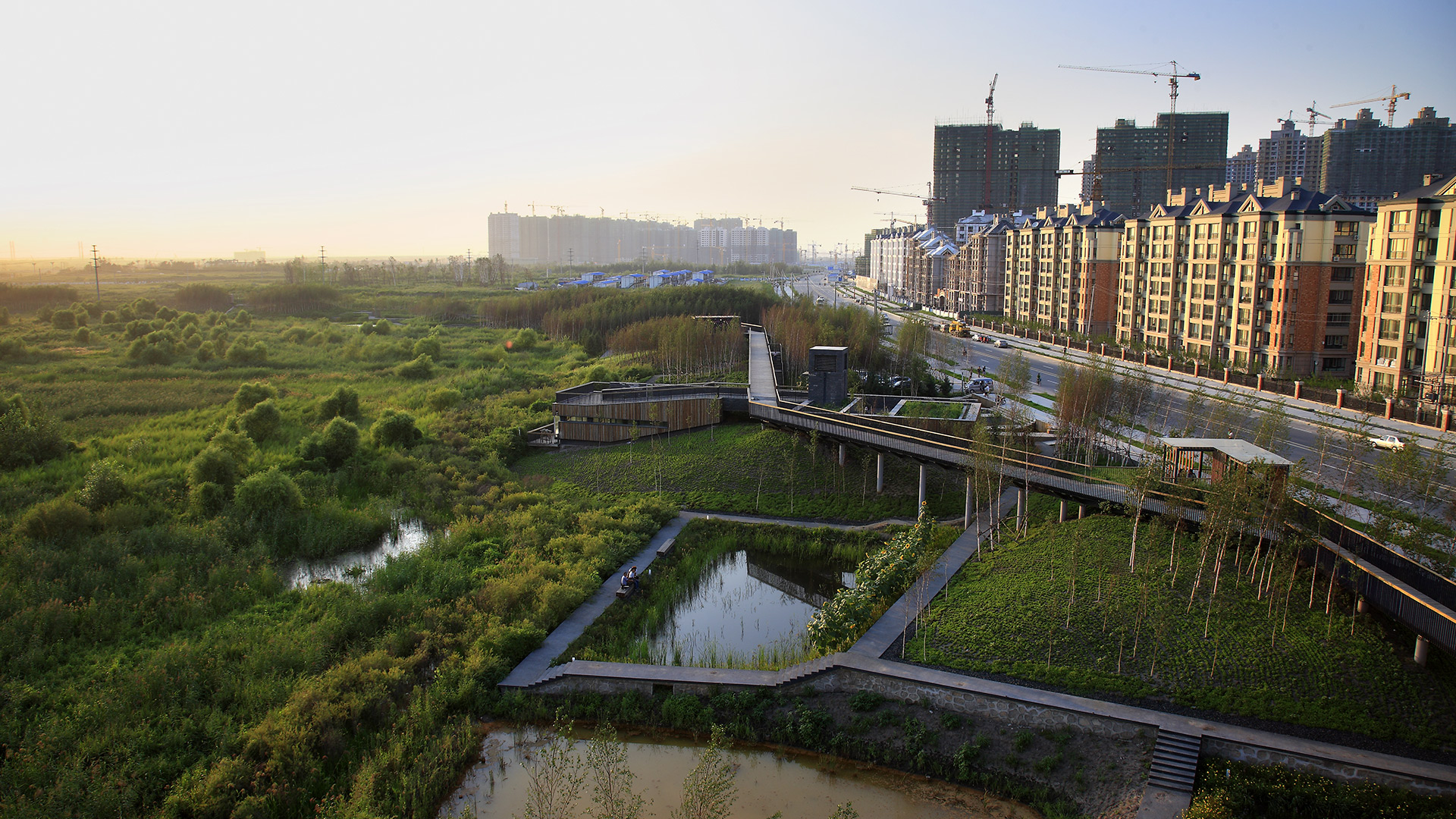In the Netherlands, a new sport has gripped the nation. It doesn’t use a ball, involve any running or need a large pitch to play on. It is ‘tegelwippen’ which translates as ‘tile whipping’ and involves removing paving slabs from gardens and urban spaces to create more areas of greenery.
It began five years ago as a competition between Rotterdam and Amsterdam, conceived by a creative agency called Frank Lee. Now two-thirds of all Dutch municipalities take part, with tile whippers hoping to win a golden shovel, as well as enjoy the benefits of a greener garden.
Tegelwippen is a clever way to generate enthusiasm for an initiative primarily concerned with climate resilience, biodiversity and wellbeing. League tables of paving slabs removed are kept so everyone can see how their municipality is faring against others. There are regular social media posts and videos featuring happy Dutch gardeners, young and old. And the overriding message of tegelwippen is that “lifting is more important than winning,” with more than 11m slabs removed since the first official competition in 2021.
This new Dutch pastime is closely related to ‘depaving,’ which has become a popular way of injecting more nature and biodiversity into urban areas. Among its many advocates are the US non-profit organisation Depave. The Portland-based environmental group was founded in 2008, has a network of volunteers that spreads into Canada and across the Atlantic to the UK, and works with communities on re-greening projects. As well as replacing areas of pavement with soil and plants, they collaborate with schools or faith groups on larger transformative projects such as playgrounds.
Depaving feeds into wider ongoing efforts around the world to create more green or welcoming public space in cities. This can include new parks, converting car spaces into ‘parklets' or ‘pocket parks’ or taking unused plots of land and creating communal vegetable gardens.
“Green spaces in urban areas have gained significant attention in Europe, largely due to the European Commission's Nature Restoration Law,” says Valeria Sepe, sustainability specialist at RICS. “Despite their importance, publicly accessible green spaces make up only about 3% of total city areas on average across the EU.
“However, some cities such as Geneva (Switzerland), The Hague (Netherlands), and Pamplona (Spain) have much higher proportions, with over 15% of their city areas dedicated to green spaces.”
James Ginley FRICS, director of technical surveying at e.surv Chartered Surveyors, says: “The obvious dual benefit is creating more green spaces to absorb rainwater and store it in the ground, while opening up land for amenities.”
There are plenty of ways for homeowners to make a difference too. “From rainwater harvesting to removing hard surfaces, small improvements can make a big difference,” says Ginley. “Rainwater storage and use in the garden can also provide cost savings, as can re-using ‘grey water’ from washing machines, toilets and garden taps.”
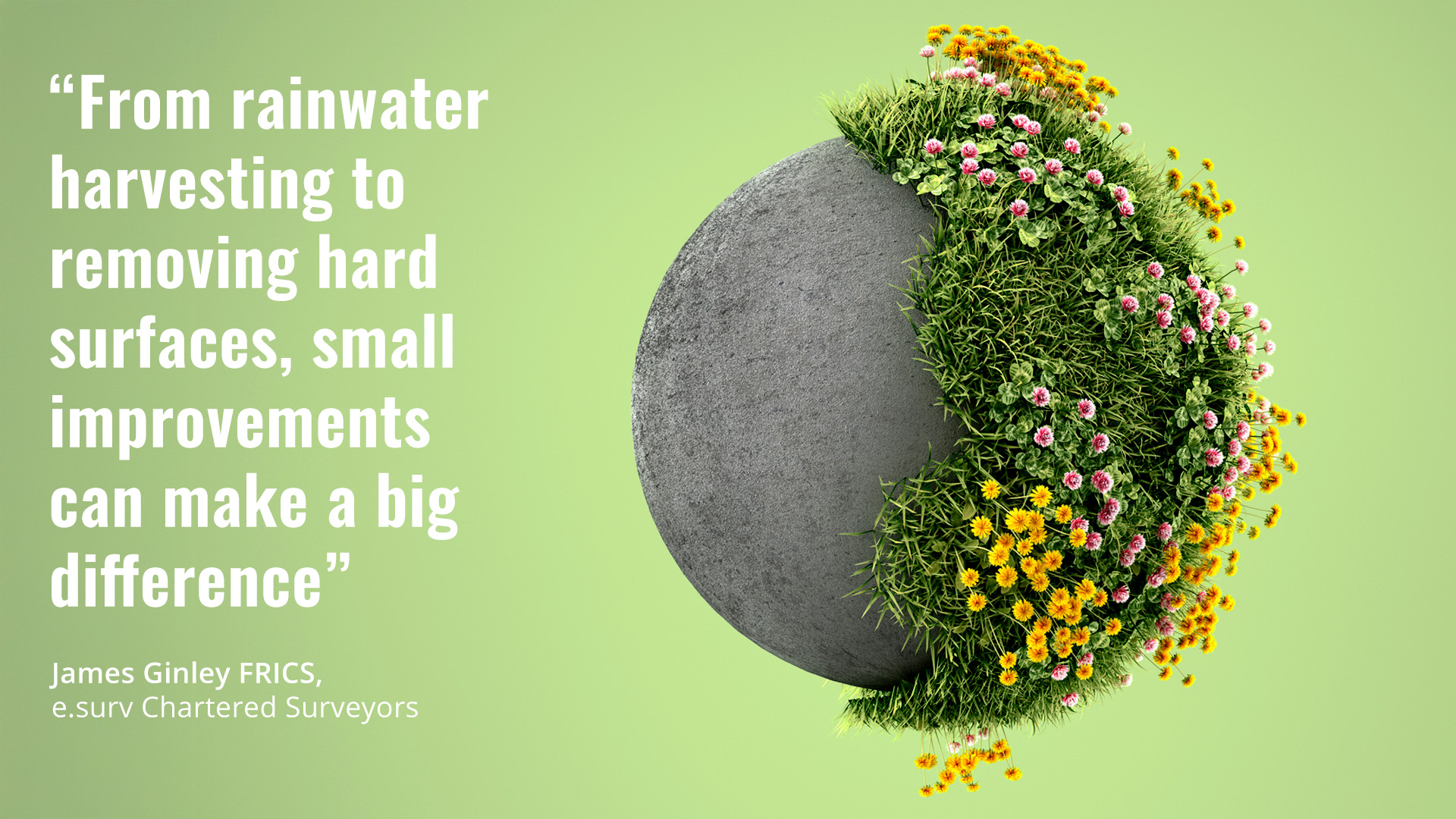
Urban vegetation is cool
The value of green and blue infrastructure in urban planning is multifaceted – from improving the wellbeing of residents, to helping create climate resilience, absorbing rainwater in floods and keeping cities cooler in long hot summers.
When the New York Times ran an article on the hottest bus stops in New York City last summer, it highlighted the issue that only one in three of the region’s 15,000 bus stops were near tree shade and one in five provide shelter from the elements. With the temperature at some of the city’s bus stops measuring as much as 14.5oC hotter than the coolest ones, it is an element of urban planning that has become a serious public health issue.
It’s part of a problem commonly faced by cities called the urban heat island effect. France has previously pledged €500m to encourage urban vegetation projects, as one method of tackling the urban heat island, because less grey concrete and more greenery generally means cooler cities.
In city centres and public places, the provision of trees, soil and plants will usually be the responsibility of a local authority, which is what the French government’s funding is supporting. But when it comes to front or back gardens it’s up to homeowner what they do with them. And in areas of the UK with limited street parking, residents are regularly making the decision to turn their front gardens into their own car parking space. Sometimes, this is because they want to install an electric vehicle charging port on the front of their house and need a driveway to access it.
“We've worked out that it's seven times cheaper to charge your electric vehicle overnight on the cheaper electricity tariffs from your home, than it is from a lamppost or public charging place,” says Alice Roberts, head of campaigns at CPRE, the countryside charity. “This is giving people a massive financial incentive to convert their front garden.”
But there’s an inherent environmental contradiction in asphalting over a green or planted garden to be able to charge an electric car – to repave instead of depave. Because as Roberts points out, it’s not only creating a greater flood risk locally but also polluting rivers further afield.
“If a lot of surface water is going down the drains, that causes not just flood risk but pollution, because [large volumes of] rainwater going down drains causes sewers to overflow. They emptied the Brent Reservoir a couple of years ago and found something like 2ft of sludge at the bottom that had been contaminated by road runoff – hydrocarbons, oil, microplastics, all that kind of stuff.”
Thames Water estimates that London needs another 357,000 rain gardens by 2050 to deal effectively with rain runoff. A rain garden doesn’t have to be a garden attached to someone’s property, it can be a flowerbed beside the pavement or planters you put in the street, engineered to attenuate water. These are also known as sustainable urban drainage systems (SuDS).
But Roberts points out that this target of 357,000 will be very difficult to achieve if driveways are continuously being covered over. “It is no longer OK for the government to sit back and say people should be able to do whatever they want with their gardens,” she says. “We’re in a completely different place now with this issue – there needs to be a change in national law or local authority policy.”
And she believes that while local or national funding for projects that provide urban greenery is helpful, there are still plenty of bureaucratic barriers to overcome.
“It's partly about funding and it's partly about enabling,” says Roberts. “I've been trying to work with a council estate over the road from me, which has got so much parking provisioned, about 40 spaces, which are all empty. It's a massive task trying to get the local authority to allow us to do anything there.”
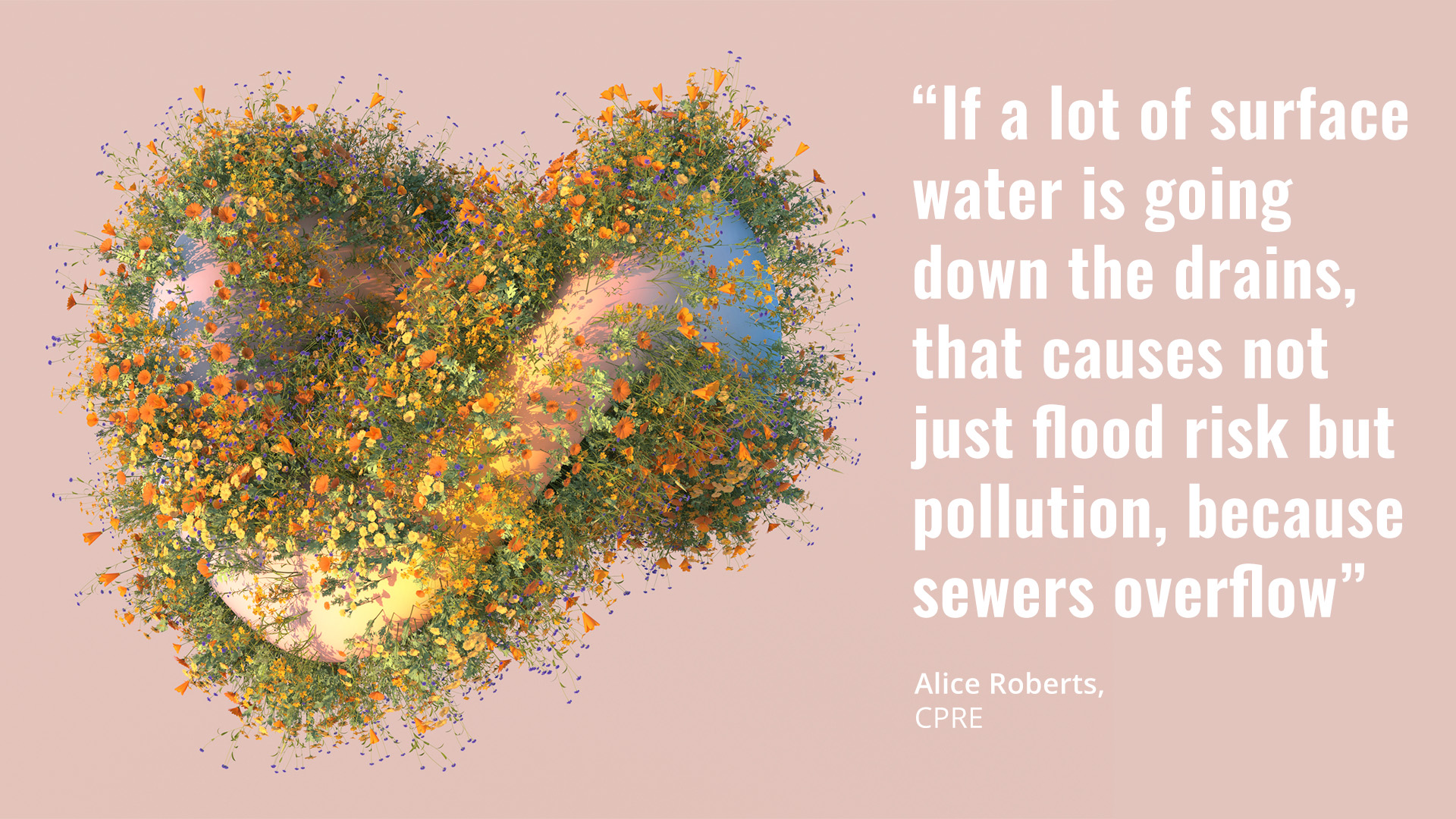
Fairer foliage
More public parks and green space would clearly be a big help in making cities ‘spongier’ and absorbing more rainwater. A recent study in Los Angeles also found that the city’s urban trees capture “significantly more” CO2 than expected, offsetting up to 60% of CO2 emissions on average during daytime.
But the distribution of green space in towns and cities is a well-documented socioeconomic issue. “Across Europe, lower income urban areas tend to have less access to green space than wealthier areas,” says Sepe.
“I find the data around inequality in urban spaces frustrating. Access to nature shouldn’t be a privilege. But too often, we see that the greener and more liveable an area becomes, the higher the real estate prices rise, which can push out lower income residents.”
Whether it’s done on a large scale with government funding or by individuals removing paving slabs from their garden, the benefits of “greening the grey” – as guidance from the London Mayor’s office puts it – are extensive.
“Many cities are already struggling with climate-related challenges such as extreme heat, flooding, and deteriorating social cohesion,” says Sepe. “Depaving is a practical and effective way to mitigate these effects while improving overall urban resilience.”


